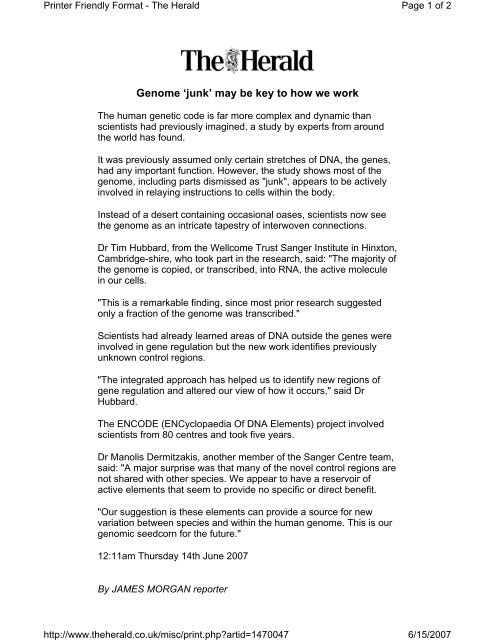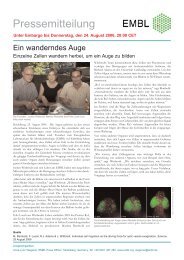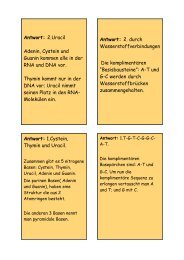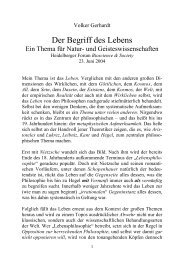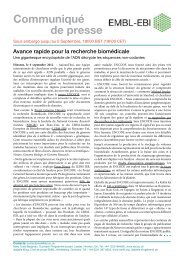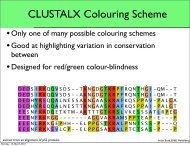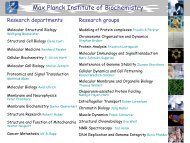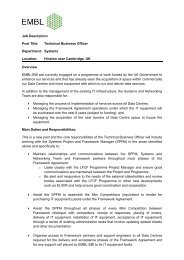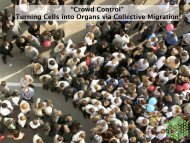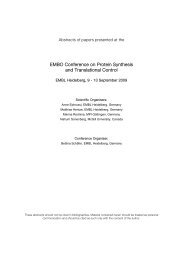Media Clips - EMBL
Media Clips - EMBL
Media Clips - EMBL
Create successful ePaper yourself
Turn your PDF publications into a flip-book with our unique Google optimized e-Paper software.
Printer Friendly Format - The Herald<br />
Genome ‘junk’ may be key to how we work<br />
The human genetic code is far more complex and dynamic than<br />
scientists had previously imagined, a study by experts from around<br />
the world has found.<br />
It was previously assumed only certain stretches of DNA, the genes,<br />
had any important function. However, the study shows most of the<br />
genome, including parts dismissed as "junk", appears to be actively<br />
involved in relaying instructions to cells within the body.<br />
Instead of a desert containing occasional oases, scientists now see<br />
the genome as an intricate tapestry of interwoven connections.<br />
Dr Tim Hubbard, from the Wellcome Trust Sanger Institute in Hinxton,<br />
Cambridge-shire, who took part in the research, said: "The majority of<br />
the genome is copied, or transcribed, into RNA, the active molecule<br />
in our cells.<br />
"This is a remarkable finding, since most prior research suggested<br />
only a fraction of the genome was transcribed."<br />
Scientists had already learned areas of DNA outside the genes were<br />
involved in gene regulation but the new work identifies previously<br />
unknown control regions.<br />
"The integrated approach has helped us to identify new regions of<br />
gene regulation and altered our view of how it occurs," said Dr<br />
Hubbard.<br />
The ENCODE (ENCyclopaedia Of DNA Elements) project involved<br />
scientists from 80 centres and took five years.<br />
Dr Manolis Dermitzakis, another member of the Sanger Centre team,<br />
said: "A major surprise was that many of the novel control regions are<br />
not shared with other species. We appear to have a reservoir of<br />
active elements that seem to provide no specific or direct benefit.<br />
"Our suggestion is these elements can provide a source for new<br />
variation between species and within the human genome. This is our<br />
genomic seedcorn for the future."<br />
12:11am Thursday 14th June 2007<br />
By JAMES MORGAN reporter<br />
http://www.theherald.co.uk/misc/print.php?artid=1470047<br />
Page 1 of 2<br />
6/15/2007


